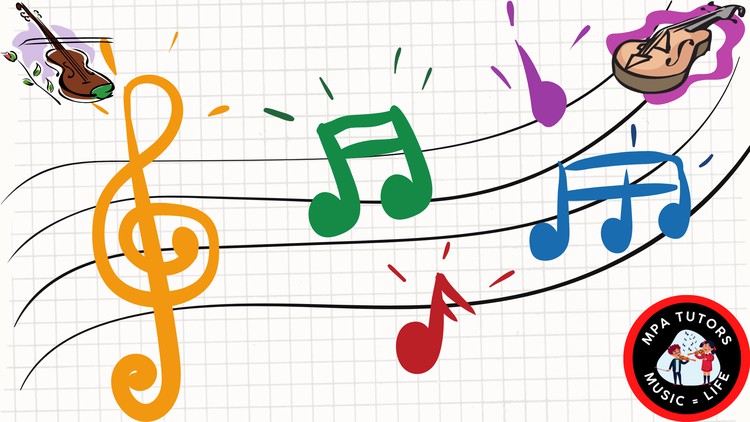
Introduction to Music Theory: Fundamentals and Terminology
What you will learn
Basic elements of music (pitch, rhythm, tempo, dynamics, and timbre)
The staff and clefs
Note values and time signatures
Major and minor scales
Basic chord progressions
Introduction to musical notation and sight-reading
Key signatures and circle of fifths
Intervals and triads
Chord inversions and cadences
Basic musical forms (binary, ternary, and rondo)
Basic concepts of melody writing and harmony
Advanced chord progressions (such as the ii-V-I progression)
Introduction to chord extensions and alterations
Introduction to chord substitutions and reharmonization
Advanced musical forms (such as sonata form)
Analysis of music to understand how harmony and melody work together
Description
Welcome to our Comprehensive Music Theory Course! In this course, you will delve into the fascinating world of music theory, where you will learn the principles and techniques that underlie all of the music we hear and love.
Throughout this course, you will explore the fundamentals of music theory, starting with the basics of notation, rhythm, and meter. From there, you will build your knowledge and skills in areas such as harmony, melody, chord progressions, scales, and modes. You will learn how to analyze music, how to identify musical forms, and how to compose and arrange music using the concepts and tools of music theory.
This course is designed to be interactive and engaging, with plenty of opportunities for you to practice and apply what you learn. You will have the chance to work on individual assignments, and group projects, and participate in class discussions and critiques. You will also have access to a variety of resources, including textbooks, online tutorials, and recordings of musical examples.
Whether you are a beginner or an experienced musician, this course will provide you with a solid foundation in music theory that will enhance your understanding and appreciation of music. By the end of this course, you will be able to read, analyze, and create music with confidence and proficiency, and you will have a deep appreciation for the rich history and culture of music.
Content